The Ku Klux Klan has, at least in the recent few decades, become synonymous with racism, white supremacy, and far-right movements in the United States.
However, contrary to popular belief, the Klan has been branded and rebranded quite a few times and has hopped on a number of political bandwagons over the course of its existence.
Historically, the Ku Klux Klan has shown its presence in three distinct entities in the past and present movements, but always with one common thread through its fabric: nationalism, white supremacy, and anti-immigration often propounded and expressed through violent terrorism against individuals or groups who opposed the Klan.
The aim, according to the Klan leaders, has always been a sort of ‘purification’ that they deemed inevitable for the American white working class; a purification from anything and everything non-white, deploying violent measures and destruction.
The origin of the Ku Klux Klan could be traced back to 1860s in the South of the United States; however, this nascent Ku Klux Klan didn’t stick around for too long and fizzled out in the early 1870s.
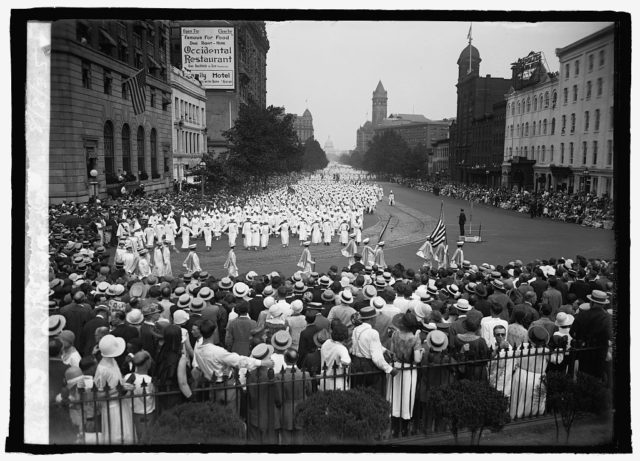
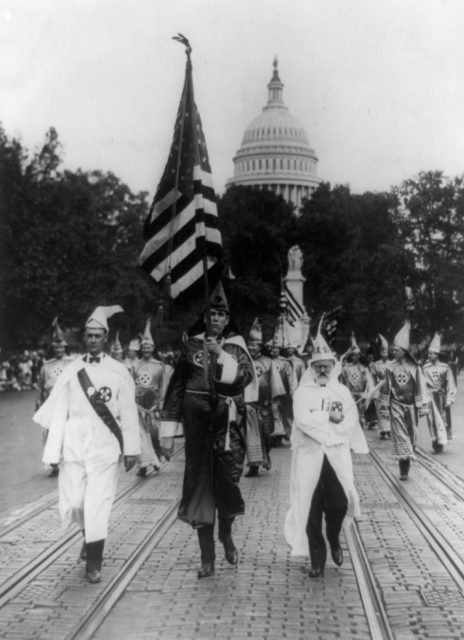
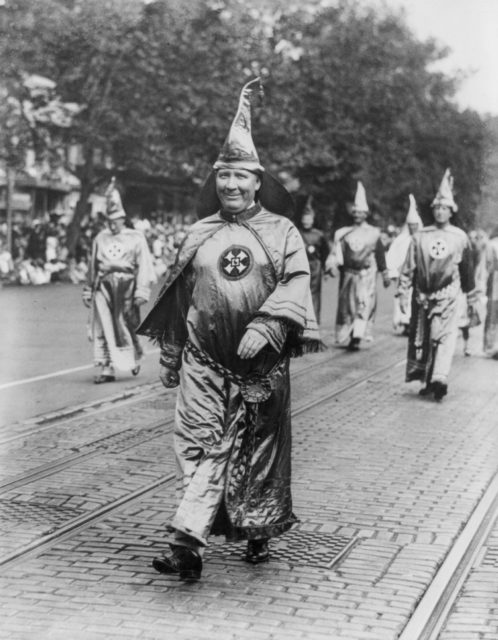
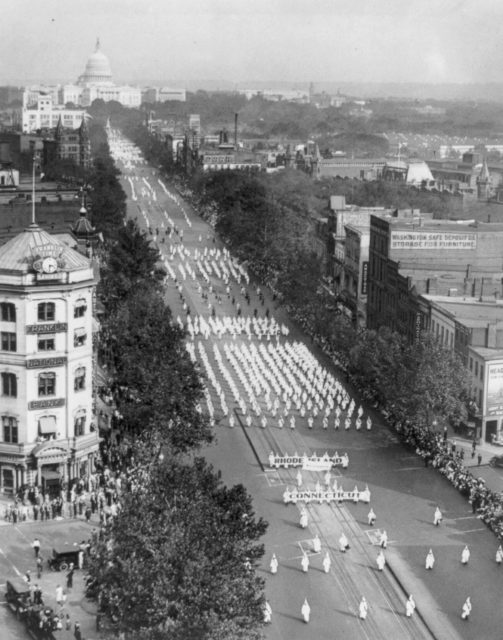
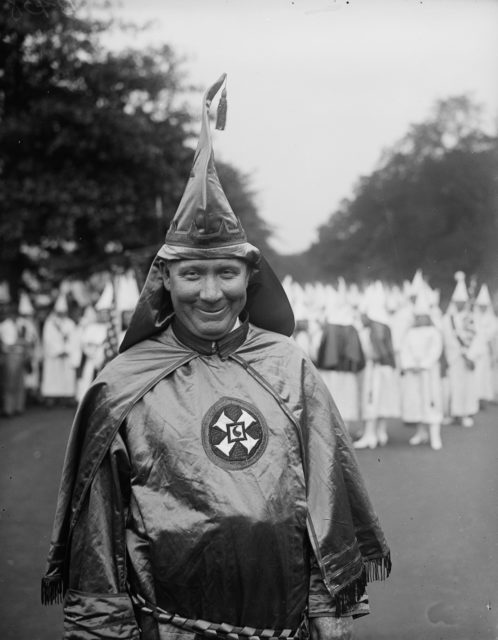
During the reconstruction era, the Klan launched itself with an aim to dismantle the newly emerged Republican party and state governments in the southern region by adhering to violent attacks against anti-slavery unionists and especially African American leaders.
The federal government took serious notice of the Klan’s ill activities and sought tough measures in order to suppress its rise, and succeeded in that.
The Klan at the time didn’t have a strict dress code that we associate with Klansmen nowadays; the group members tried to make their own uniforms and costumes colourful and appealing – robes, conical hats and masks made them terrifying and anonymous at the same time.
The rhetoric of the Ku Klux Klan had always been on the fringe of defensive, a contrast to what the other sane people deemed the group as.
The ideology of the Ku Klux Klan had been one of a ‘protector’ against the ‘invaders’ that have taken over the United States, and have no right over the land and its many bounties.
After the American Civil War, immigrants were moving in, black men could walk freely equal to white men, Greeks, Jews and Italians were steadily assimilated in the society: progress and peace for many, invasion and takeover for the Ku Klux Klan.
Not many people know that Imperial Wizard Hiram Evans even proposed a march on Washington and succeeded.
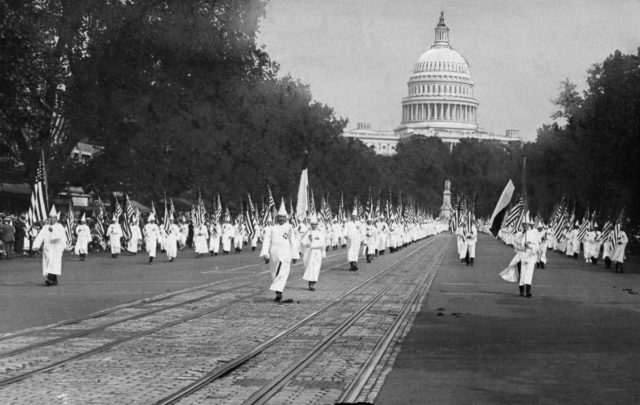
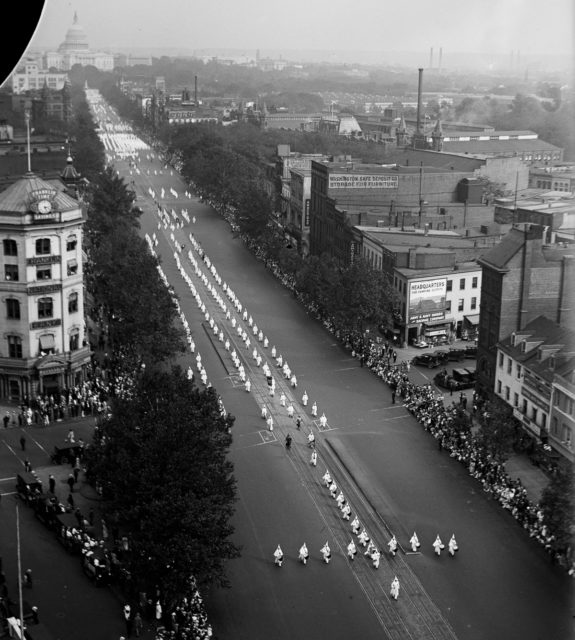
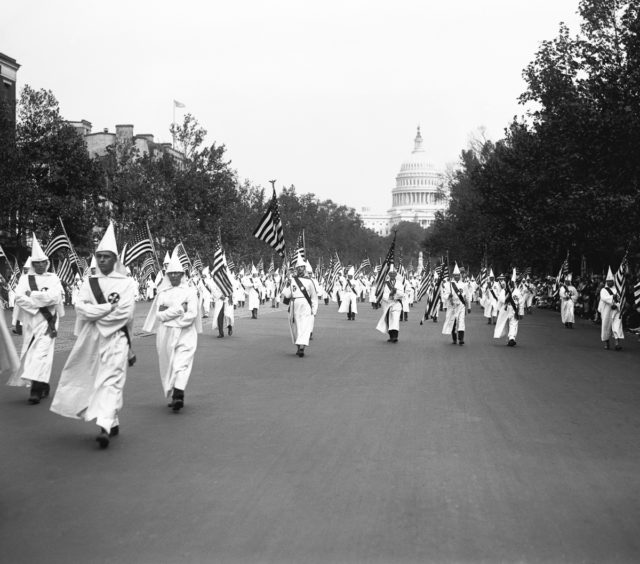
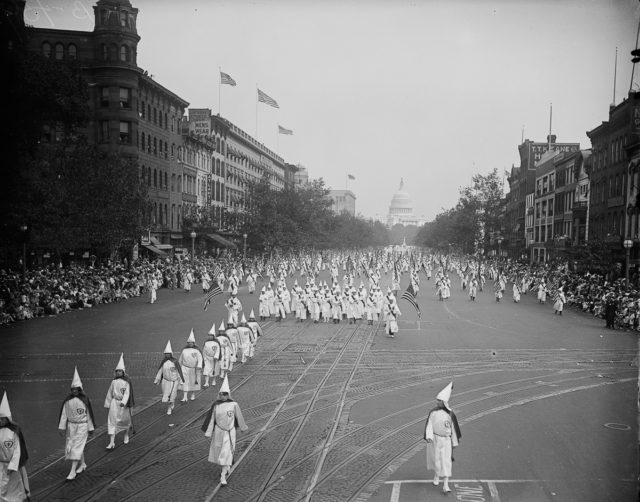
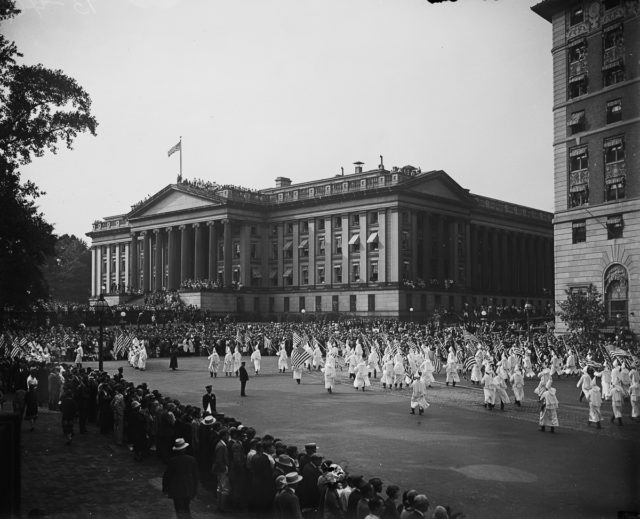
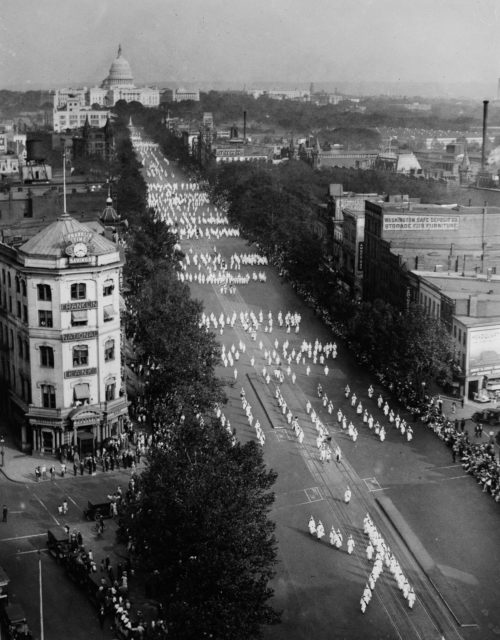
A staggering sixty thousand men dressed in terrifying white robes marched down Pennsylvania Avenue in unison much like a military parade.
Hiram Evans wanted to make a point to the ‘nation’ that they were the true defenders of the values and protectors of the borders of the United States that were threatened and breached by the ‘intruders.’
On 8 August 1925, the Ku Klux Klan marched on Washington, what was then considered the largest show of power by the Klan ever when tens of thousands of Klansmen came to Washington on trains and buses.
The eerie aspect of the whole affair was that almost all of them brought their families and children along with them, as if they were on a day out or a picnic.
While the onlookers and those who saw the event in pictures felt a shiver down their spine seeing what they deemed an ugly side of America, Klansmen celebrated their strength with dances and chants.
The turn of the century was especially auspicious for the Ku Klux Klan to rebrand and re-emerge as the society grew increasingly xenophobic, not as much the Ku Klux Klan would have wanted it to be, but enough to create stir and turn it into a hateful spree all over the country.
As 1914 approached, the Klan had a new target alongside African Americans, Mexicans and Jews: i.e. the Germans and Middle Easterners.
For the next fifty or so years, the Ku Klux Klan had to fiercely fight for its existence as it struggled to contain the progress and progressive political manoeuvring pushed them further away on the fringe. The Democratic Party that had previously funded and supported the Ku Klux Klan in the South had shifted to a more progressive stance.
The Ku Klux Klan had to look for a new bandwagon which they found in the Republican corner, a party that Ku Klux Klan once despised.
